Pico 4 announced: 11 things you need to know about the Quest 2 killer
We've learned all the details about the standalone VR headset, including when and where it'll launch and how it could top the Quest 2.
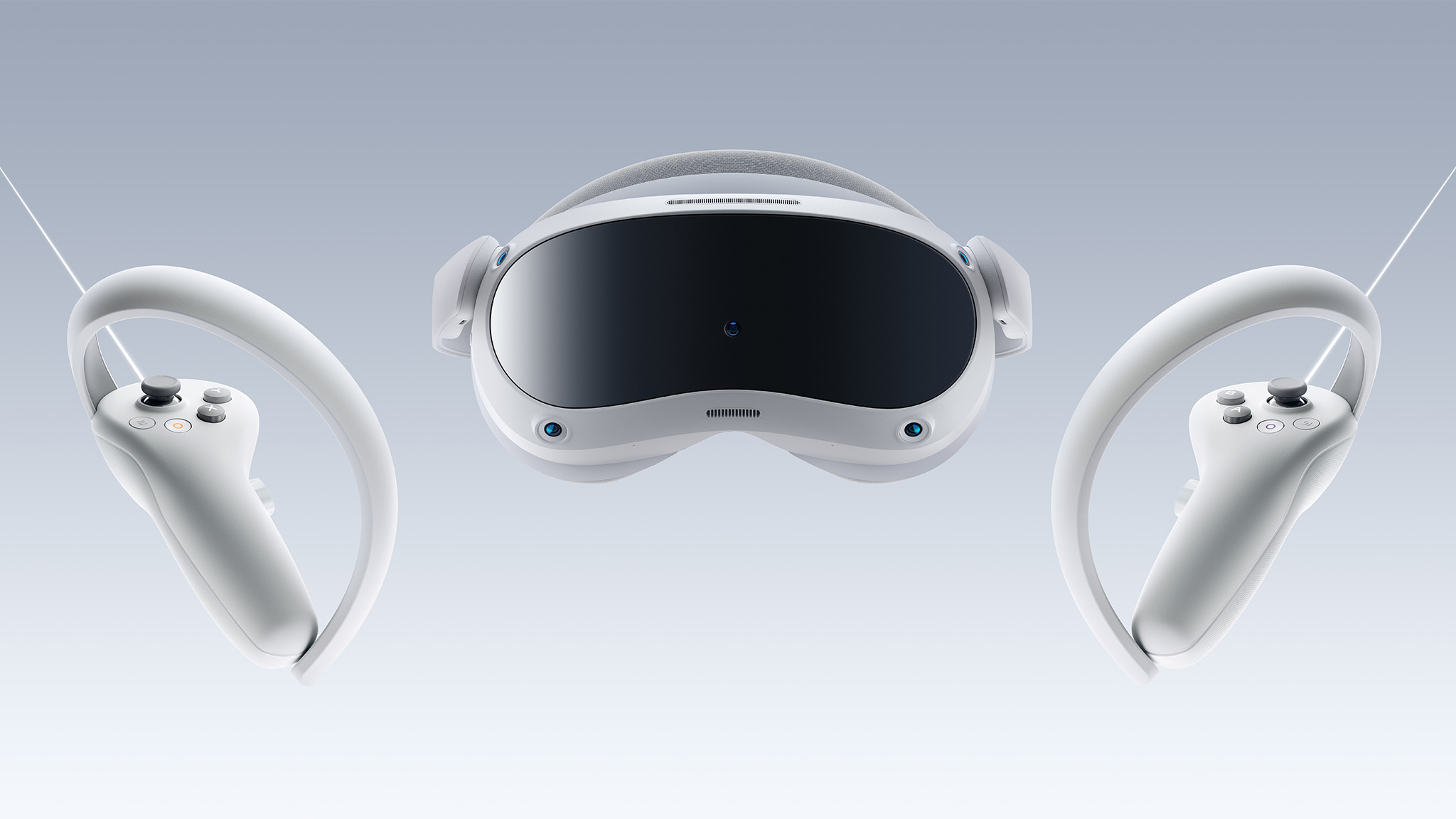
Pico announced its standalone Pico 4 VR headset on Wednesday, giving us an in-depth look at how the headset will challenge other popular devices like the Meta Quest 2. From visual upgrades to a lighter design and a revamped gaming library, the Pico 4 looks to be a compelling rival — but it won't be available everywhere.
Aside from today's livestreamed reveal, Pico invited us to a private discussion where we learned more information about the headset's specs, exclusive software tools and partnerships, and the company's US expansion plans. Here are all of the most important details you need to know about the Pico 4.
Pico 4 won't come to the US...
Despite previous rumors that Pico was targeting a worldwide launch, the Pico 4 will launch in these fifteen countries on October 18:
- Austria
- Belgium
- Denmark
- Finland
- France
- Germany
- Italy
- Japan
- Korea
- Netherlands
- Norway
- Spain
- Sweden
- Switzerland
- UK
It will also come to Singapore and Malaysia later in 2022. The company plans to show off the device in pop-up shops in London, Paris, and Munich, with a particular focus on Germany. Although they didn't say this, it makes sense Pico would target Germany because the country has banned the Quest 2 there, leaving the door open for the brand to succeed.
Unfortunately, the base Pico 4 won't come to North America. But that doesn't mean another Pico headset won't.
...but the Pico 4 Pro/ Enterprise will
Although it wasn't the focus of the presentation, the Pico 4 Pro and Pico 4 Enterprise will follow up on the Pico 4 with "eye tracking and face tracking, and some other hardware improvements." The Pico 4 Pro will launch as an exclusive consumer product in China, while the Pico 4 Enterprise will be a global product — meaning it'll be available in the US.
It's unclear whether just anyone will be able to buy the Enterprise device, or if it'll require some kind of business license deal. And we don't know how much it'll cost. But the emphasis on face/eye tracking and pancake lenses make the Pico 4 Enterprise a proper competitor to the Meta Quest Pro in the States.
Be an expert in 5 minutes
Get the latest news from Android Central, your trusted companion in the world of Android
We'll learn more during AWE Lisbon in October when Pico properly announces the Pico 4 Enterprise.
Pico 4 gives a major visual boost
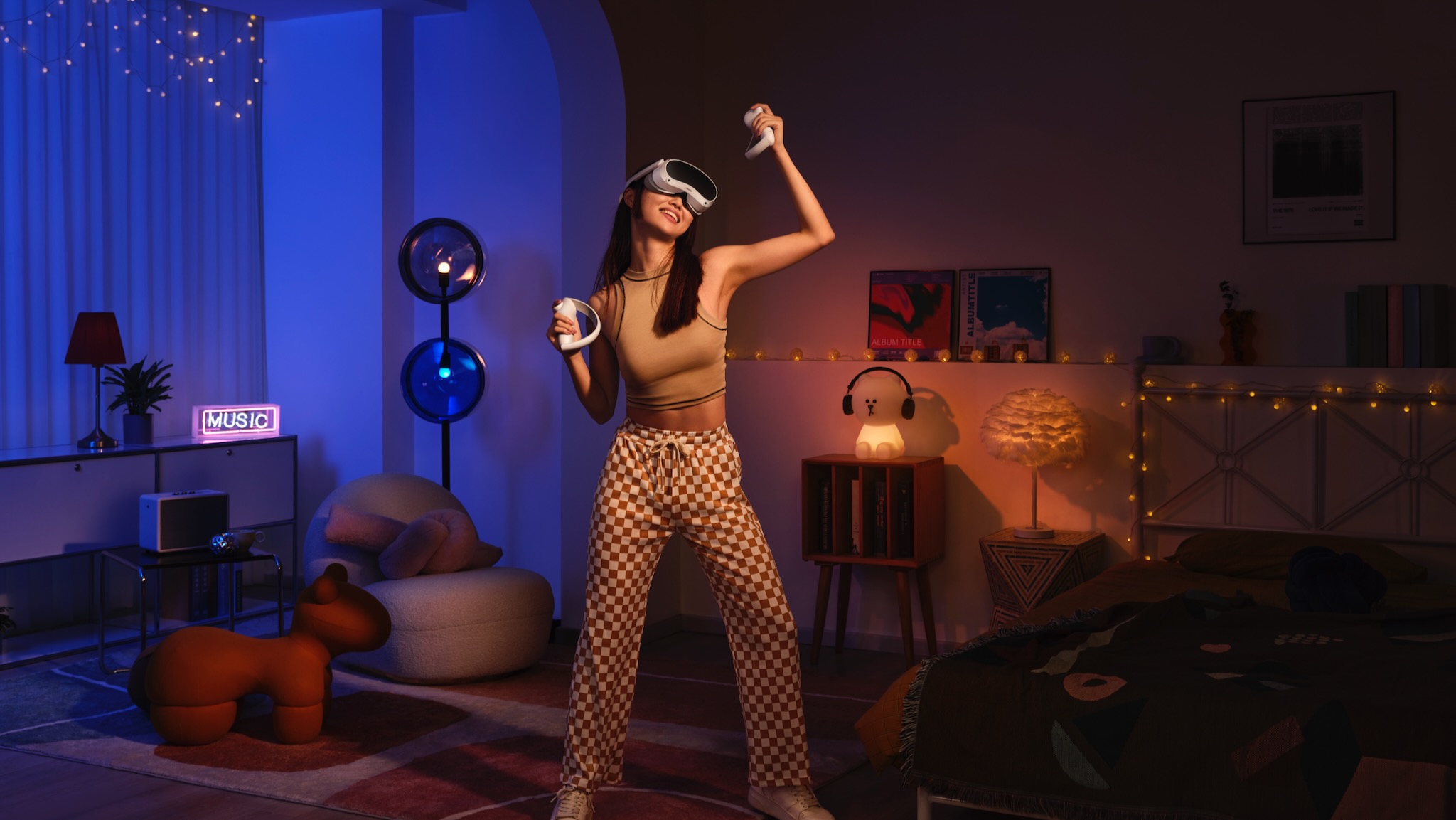
It's difficult for wireless VR headsets to achieve especially powerful graphics, but the Pico 4 will support a 90Hz refresh rate, "4K+" screen and 1,200 PPI, as well as a 105º FOV. Compare that to the Quest 2, which has a PPI of about 773 and a 90º FOV; considering the Pico 4 will support many of the same Quest 2 games, it could give gamers a graphical enhancement they'll enjoy.
Pico's team also told us that the headset's "amount of color vibrance is dramatically increased" over the Pico Neo 3 Link released earlier this year. We're unclear whether the headset lenses will use OLED or LCD, though we assume the latter since that's what the last headset used.
Pancake optics = an ultra-light design
Just like the Quest Pro, the Pico 4 will have pancake optics, a lens design that folds light in such a way that the display can sit much closer to your eyes and take up much less room than typical Fresnel lenses. Because of this, the Pico 4 weighs 295g / 10.4oz without the strap, or about 500g with the strap.
That's about the same as the Quest 2 (503g), but the Pico 4 strap includes a built-in battery and fit wheel like the Elite Strap with Battery, which adds a bunch of extra weight compared to the default strap. The Pico 4 is designed to work as is without accessories, the company said, and it has a "really neutral weight distribution" between front and back, while the Quest 2 and other headsets are much more front-heavy.
Clearer passthrough and IPD adjustments
Anyone sick of the Quest 2's grainy black-and-white passthrough can rejoice. The Pico 4 has a 16MP RGB camera for full-color passthrough, which will let you see your surroundings much more clearly. If you hear someone in the room talk to you or think the cat is wandering around at your feet, just use the passthrough shortcut and check for yourself. Pico could also support better AR or mixed-reality experiences thanks to this revamped camera.
You'll also see more clearly because the Pico 4 will have much better IPD adjustments than the Quest 2. Specifically, it'll have a "0.5mm stepless IPD adjustment within the system settings." Whereas the Quest 2 has just three fixed distances that might not match your eye width, the Pico 4 has better fine-tuning, with "at least 20 different levels" to choose between.
Narrower controllers for better immersion
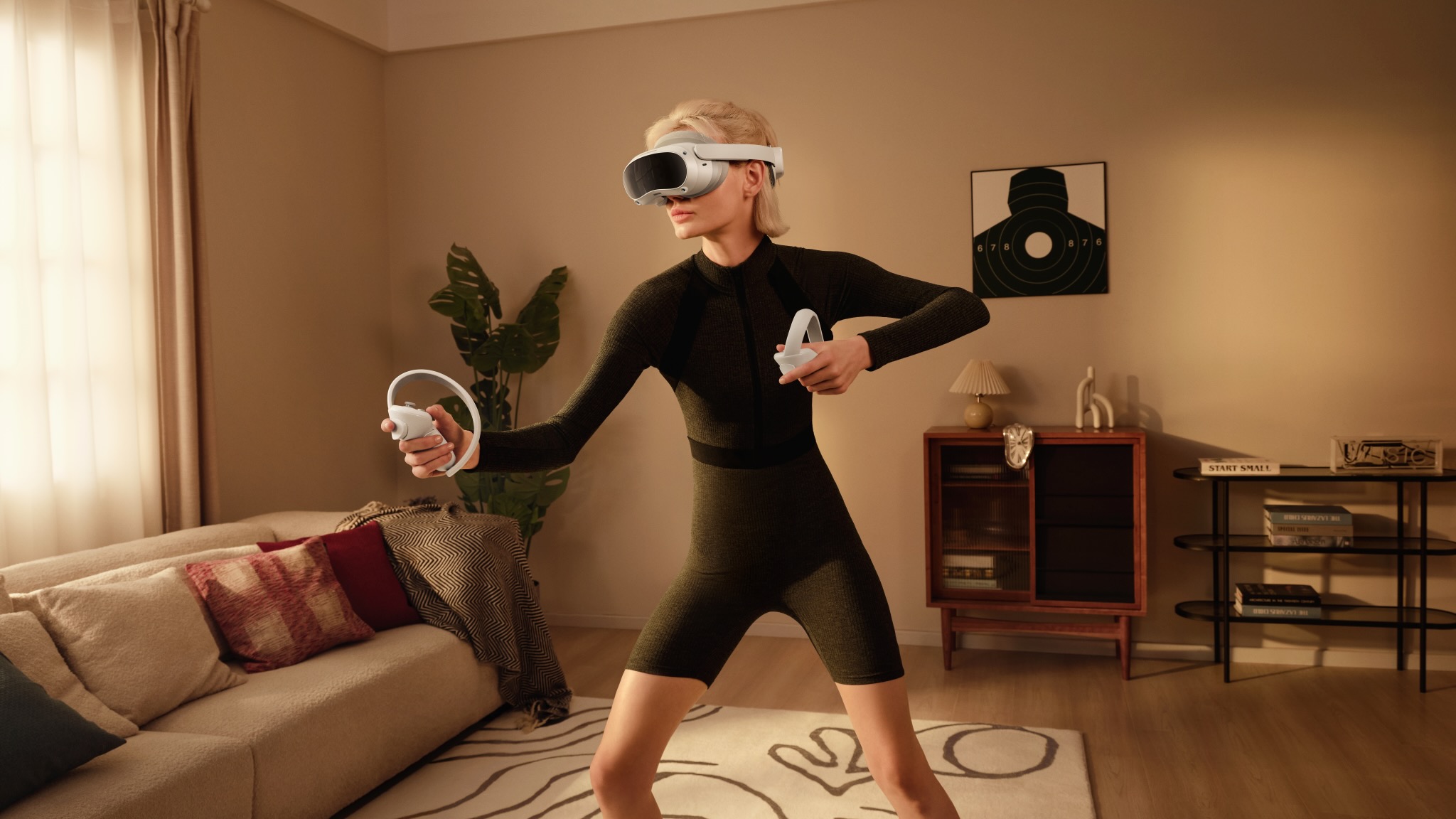
Quest 2 owners will inevitably slam Oculus Touch controllers into one another at some point because of how wide they are. The Pico 4 controllers have a "one-piece rotating arc column" that houses the IR sensors above your hands instead of in front of them, and the controllers themselves are very narrow so they won't collide when playing games where your hands must come close together.
Pico also bragged about the controllers' improved haptics. It used a "very powerful hypersense motor within the controllers which allows feedback from 50 to 500 hertz frequency to create a powerful but distinct rumble.
Remote assistance sounds freaking cool
During our private presentation, we heard of a neat software tool called Remote Assistance where you can invite a friend to piggyback onto your headset feed and help you figure something out with your settings or game.
"I can share my headset video stream to their personal device and then they can either voice message or chat with me or even use their finger and I'll see like a silhouette of the finger on in my display to basically give me support," they explained. "If I'm stuck on a level I can't find something in his play environment then my friend will be able to help me."
So if a friend or parent needs technical support, you'll be able to guide them remotely instead of having to put on the headset yourself.
TikTok, now in VR
Pico is owned by ByteDance, the Chinese company behind viral app TikTok, and it's leveraging its parent's assets by adding TikTok to the Pico video app. You'll log into your account on the headset and will be able to enjoy your feed of videos while relaxing in virtual space. It's unclear whether people will enjoy vertical videos meant for a phone surrounded by empty space, but perhaps some of its fans will find that appealing.
It's more likely, though, that users will use the TikTok integration to share their gaming feed with their TikTok followers. During the keynote, Pico showed off its mixed reality functionality where players can install the Pico app on their smartphone and record their physical selves playing a VR game. The app will then overlay the virtual world around the player, making for more engaging videos.
Pico Fitness Band will monitor your VR workouts
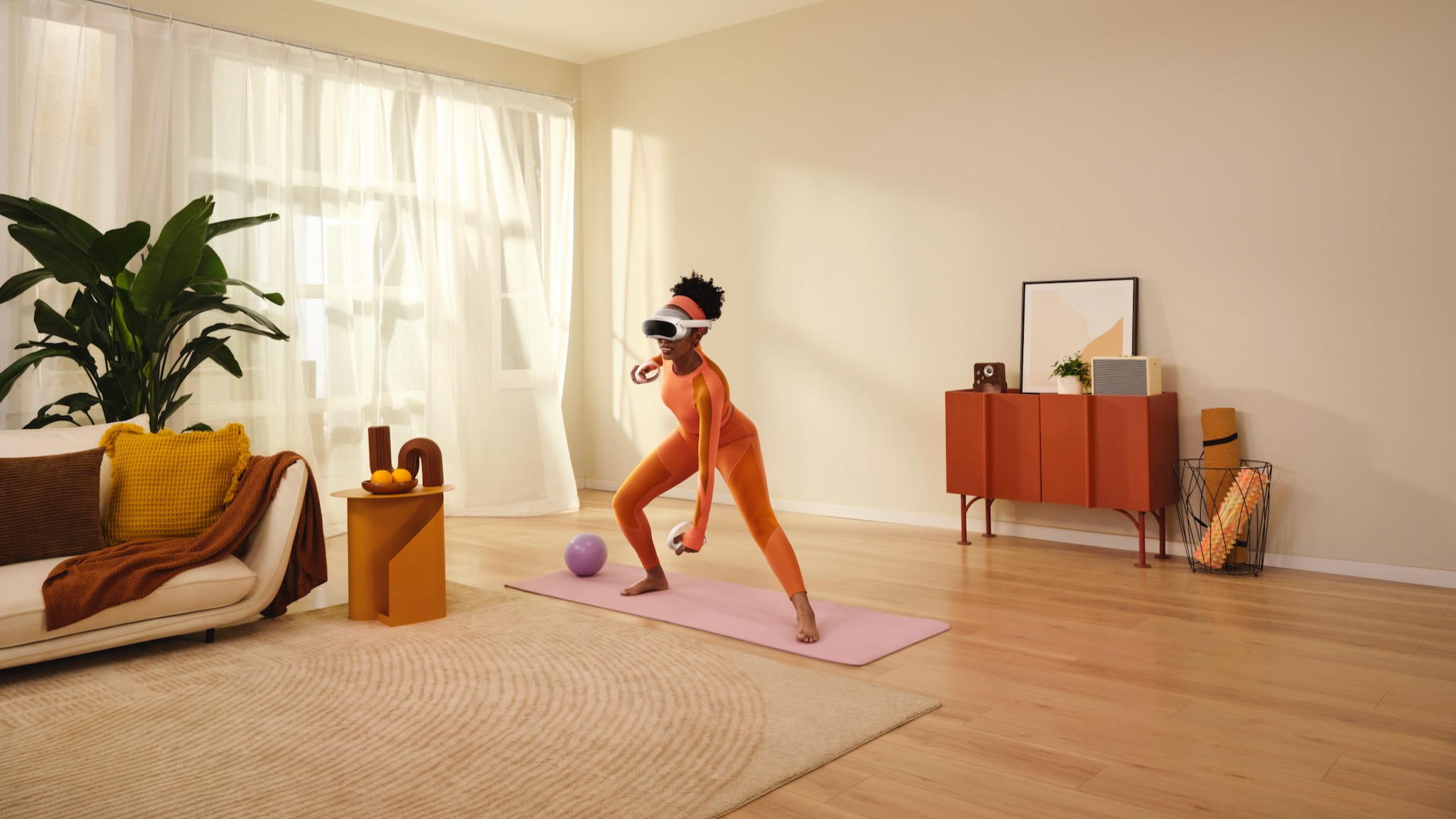
Right now, the Quest 2 has Oculus Move for tracking your calories burned while playing exercise VR games, but it doesn't pair with a fitness tracker for more accurate results. Pico plans to sell a fitness tracker accessory for 49 Euros that you'll wear on your wrist and ankle, that the headset can track. This will give the headset "two additional points of tracking" for games like VR soccer where handheld controllers won't work, or for creating a virtual full-body pose. It just won't gather heart rate data like a proper fitness tracker.
Pico pushes multiplatform gaming
The Pico Neo 3 Link has about 130 games in its library, in addition to SteamVR support, and that number will only grow. Pico claims that it is "working with the developer community to ensure that all popular third party games" come out on Pico the same day as on other platforms. The headset runs off of the same Snapdragon XR2 chip as past standalone VR headsets, so you know what to expect in terms of performance.
Some Quest 2 games confirmed to come to the headset include Puzzling Places, Walking Dead: Saints & Sinners Chapter 2, Rec Room, and Demeo.
Competitive Pico 4 pricing
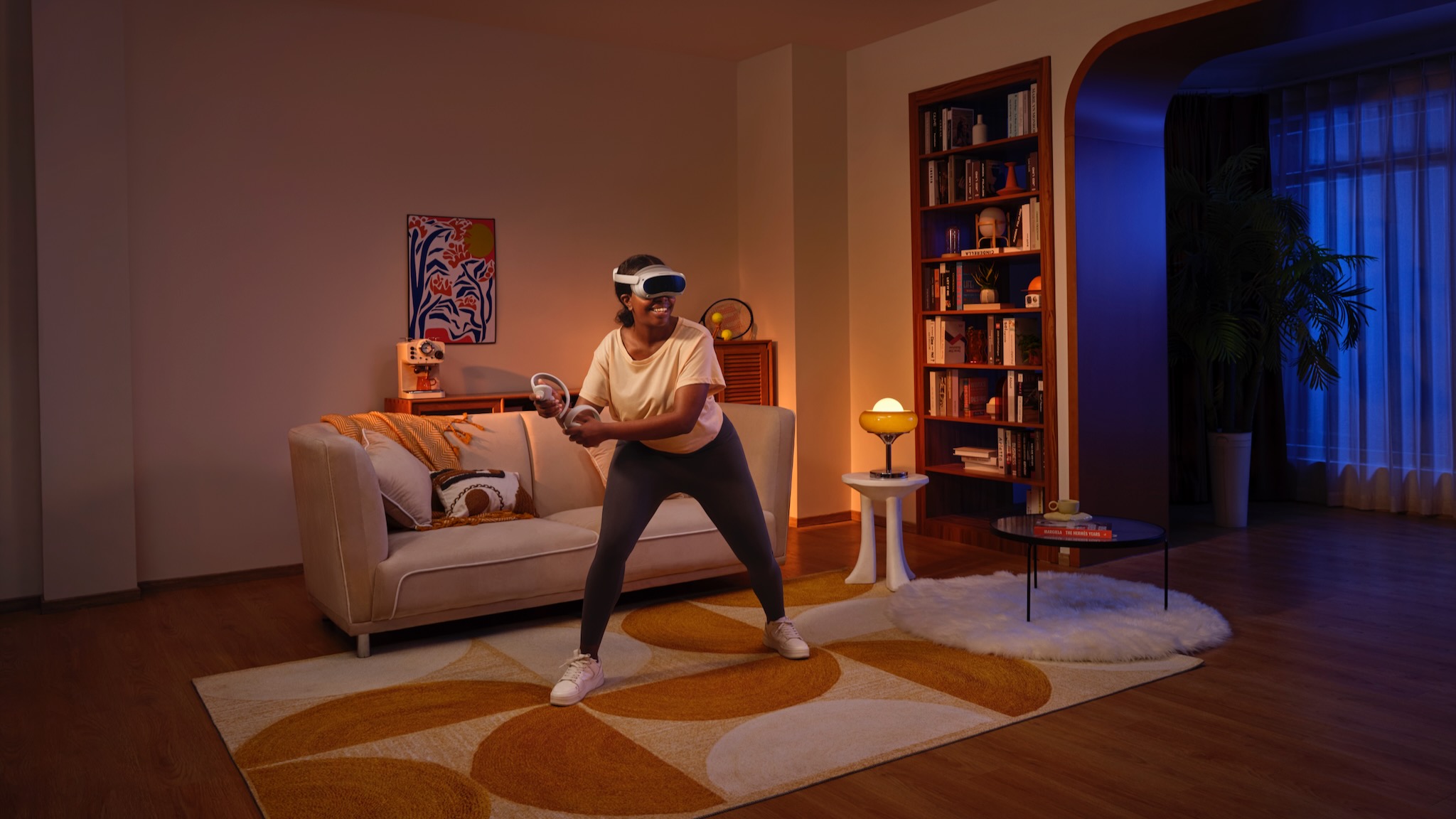
The Pico 4 will cost just £379, and even less for anyone who bought the Pico Neo 3 Link. They'll be able to preorder the device earlier than anyone else — September 23 — at a 35% discount. Then the "general public" will be able to buy it starting sometime in October.
For comparison, the 128GB Quest 2 currently costs £399 after the recent price hike; and it doesn't have many of the same new perks as the Pico 4 like pancake optics and color passthrough.
As a US-based team of VR fans, we're disappointed that Pico decided not to challenge Meta with the Pico 4, despite its significant upgrades over the Quest 2 like color passthrough, pancake optics, and 4K+ resolution for the same price. It proves that many of the perks coming to the Quest Pro — rumored to cost well over a grand — don't actually need to cost that much.
Still, that disappointment aside, we think Pico did an excellent job of improving on the last generation in such a short timeframe. It improved the hardware and made some splashy software improvements that'll appeal to both casual TikTokers and more serious VR fans.
If you want to see the entire presentation, check out the YouTube video below from Pico.

Michael is Android Central's resident expert on wearables and fitness. Before joining Android Central, he freelanced for years at Techradar, Wareable, Windows Central, and Digital Trends. Channeling his love of running, he established himself as an expert on fitness watches, testing and reviewing models from Garmin, Fitbit, Samsung, Apple, COROS, Polar, Amazfit, Suunto, and more.
